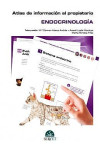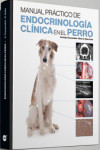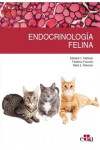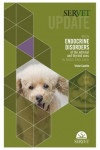CANINE AND FELINE OBESITY
Elices Mínguez, Roberto
Datos técnicos
- ISBN 9788417640248
- Año Edición 2019
- Páginas 160
- Encuadernación Rústica
- Idioma Inglés
Sinopsis
This book provides veterinary surgeons with a global perspective on obesity in dogs and cats. Moreover, the information and therapeutic strategies presented within can help ensure that pet owners become fully involved in improving the health of their pets.
Índice
Part I. Introduction
Adipose tissue as body tissue
Regulation of body weight
Fat as an endocrine organ
Disease or disorder?
Epidemiology. The pandemic of obesity
Definitions: relative weight, optimal/ideal/objective weight, fat mass
Standard breeds and mixed-breed patients
Associated risks
Clinical implications
Type II diabetes and feline obesity
Part II. Pathogenesis
Neuroendocrine regulation of food intake
Control of satiety. “Satiation” versus satiety
Aetiology. Energy balance.
Risk factors. Multidisciplinary pathology (triad)
Clinical team: veterinary surgeons and technicians
Pet owners and their families. Food as an interrelation
Environment: breeder, trainer, park group, and internet
Neutered patients and obesity
Growth and body composition: hyperplasia/hypertrophy of fatty tissue
Obesity-associated changes: weight-gain dynamics and metabolic disorders
Changes in body composition associated with weight-loss programmes. Fasting versus diet
Obesity, inflammation, and metabolic syndrome
Part III. Treatment and prevention
Identification and evaluation of obese patients
Clinical tools
Research
Effective communication with the pet owner
Participation versus submission
Ideal weight and health
Nutrients in weight-loss programmes
Protein
Energy
Fibre
Food selection
Interpretation of the product label: light foods and prescription foods
Protocol
1. Evidence of disease
• Assessment of body condition and weight, and definition of target BCS
• Additional tests
2. Information for the pet owner
• Cost and duration of treatment
3. Determination of energy requirements. Factors involved
• Practical examples
4. Selection of food. Current market situation
5. Management of feeding
• Units of measure
• Daily ration
6. Exercise
Revisions after reaching target weight. Factors implicated in the rebound effect
Maintenance energy requirements
Exercise, physiotherapy, and lifestyle
Appendices
Pharmacological treatment of obese pets
Drugs used in human medicine
Veterinary-specific drugs
Nutrients with positive effects in weight-loss programmes
Veterinary surgery in obese patients
Otros libros que te pueden interesar

Atlas de Información al Propietari...
75.00€ 71.25€
- ¿Quiénes somos?
- Gastos de envío
- Política de privacidad
- Políticas de devolución y anulación
- Condiciones Generales de contratación
- Contacto
2025 © Vuestros Libros Siglo XXI | Desarrollo Web Factor Ideas









